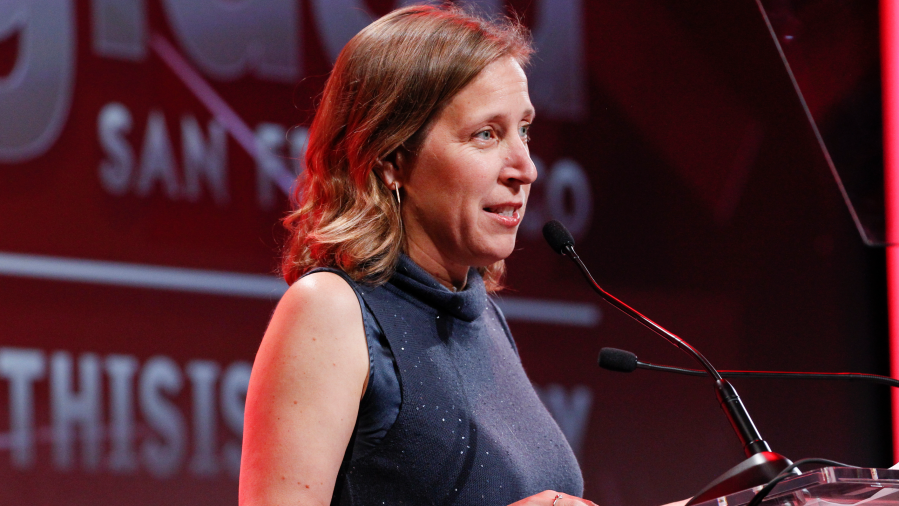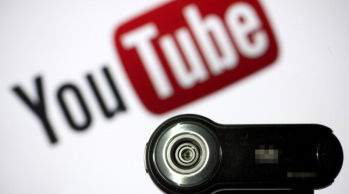YouTube makes the case for its “creative economy”

With many of us glued to screens during the pandemic, YouTube ad revenue shot up. What has that meant for creators?
Many tech companies had a good pandemic, financially-speaking, at least.
That includes YouTube, which is of course owned by Google, owned by Alphabet. YouTube ad revenue jumped 46% between 2019 and 2020, as people stuck at home turned to the platform for all sorts of reasons.
I recently spoke with YouTube CEO Susan Wojcicki, who says more people are becoming creators for the platform, as well as consumers of videos. And they’re making money in the process. The following is an edited transcript of our conversation.
Susan Wojcicki: We did see that when people were stuck at home, they definitely were turning to more streaming services, and we definitely saw big growth in our traffic and the engagement. And creators in many ways, because they were used to filming at home or used to filming with fewer people around them, were able to continue to produce and create a lot of really valuable content. We also saw that during the pandemic people needed help. They needed to learn a lot of skills they hadn’t ever learned before — fix things in their house, as well as of course, kids who were at home. And so we have a lot of valuable learning, how to help your kids, how to help with homeschooling. So we definitely saw YouTube be a really critical resource.
Kimberly Adams: Can you talk to me a little bit more about the YouTube Creator economy — how it’s grown over the years and how you see it changing moving forward?
Wojcicki: Sure. So we have over two million creators who generate revenue from YouTube. When we look, for example, in the U.S. what that actually means, we see that that actually contributes really significantly in both GDP and in jobs. Twenty billion in GDP and almost 400,000 in jobs. It’s just a way for individuals to be able to take their passion, turn it into a next generation media company and generate revenue.
Adams: Speaking of generating revenue: Based on what I can see online, most of YouTube’s highest paid creators are white. And I know you’ve had a big initiative to try to elevate more creators of color. But what is the long term strategy for increasing the diversity of the types of people who can get rich on YouTube?
Wojcicki: Well, first of all, we think YouTube is a great way for being able to diversify the voices that we hear in media. Because YouTube isn’t a gatekeeper, anyone can just post their video and post and start creating content and connecting with their audience. They don’t need to go create a script and have someone review it and then approve it, fund it, etc. We really do see that YouTube has enabled a lot of voices from underrepresented communities that we never would have heard from before in media. It’s been hard for us to really understand exactly what is the diversity of YouTube because we don’t have our creators report. They don’t tell us what their backgrounds are. And so we actually launched something recently called self-ID, where our users can actually identify and tell us what is their background? How do they affiliate? And that is going to be really useful for us to understand exactly what is the makeup of our creator base, and how do we continue to support them in all ways, whether it’s monetization, distribution, creation — what is the exact makeup of our ecosystem and how can we continue to support it? We actually have $100 million Black voices fund that we’ve been doing to be able to elevate different Black voices. We have a number of programs for women. We do [have] ways for all different types of groups to be able to get started to really foster and support the diverse ecosystem we see on YouTube.
Adams: You said that YouTube isn’t a gatekeeper. There’s a lot of people I talk to on Capitol Hill here who would argue the opposite, that you do have to make some tough decisions about who does get space on your platform, and who does get to monetize their content on your platform. How do you see that role for yourself and how it’s changed over the last couple years?
Wojcicki: Well, we do have community guidelines. We want to make sure that when you come to YouTube, you have some expectations. For example, content that would be adult content, violent, violent extremism, hateful — there are many different categories that we think don’t belong on YouTube, for many different reasons. We do tell our creators that as long as they meet our community guidelines, then that content can be posted and be monetized, provided it meets a certain threshold, which is very different than how TV works. So if you think about TV, you used to have to submit a script that would have to be reviewed by people, they would have to fund it, and there’s a limited number of channels that can be available. The advantage of YouTube is there are millions of channels. I mean, when I was growing up, there was like a handful of channels. And so the fact that now there are millions enables that there’s so many new voices and opportunities and topics that can be discussed that we never would have seen beforehand.
Adams: I have encountered more than one kid, some in my own family, who have told me that when they grow up, they want to be YouTubers. And they use that word specifically. What do you think of that — of kids looking to this kind of content creation as a career choice?
Wojcicki: Well, certainly there are many creators who are doing very well, and a lot of creators actually will do it as a hobby. So some of them, certainly many do it full-time, but many do it as something in addition. And so you think about it — it’s an opportunity to really engage in something you’re passionate about, share it with a global audience, generate revenue, and a lot of creators also will do more than just the videos. Once they have the videos and they have the audience, they’ll write a book, they’ll have a product, they hire people to work on it. I mean, if you think about it from a more academic standpoint, if you’re creating a video, you need to have a point of view. You need to be able to express it articulately. You need to think about how to tell that story. And so I do think, academically, there are many benefits to being able to think about how do you create a video that has a story, has meaning, is engaging. From a career standpoint, it certainly is a very valid career for some set of people. It’s a very valid hobby for some set of people. And then for others, it’s just an opportunity to engage and do something that is a way to explore or grow their passion. But they’re probably not going to have a — there’ll be some set that, of course, will not have a big audience. They’ll have a small set of people that watch their videos, but it doesn’t mean it’s not still a compelling experience. I encourage people to explore their passions and see what makes sense for them.
Adams: If I can ask about something that’s keeping me up at night, but also ties into your point about innovation: What about deep fakes? The technology to replicate audio and video that looks so convincing is just getting better. Do you all have the technology at YouTube to help users identify whether or not what they’re looking at is real?
Wojcicki: We definitely have invested in this place, and we’ve done a fair amount of work. For example, we released a data set for a lot of researchers to be able to work and train and understand deep fakes better. And that certainly is something that I’m asked about a lot, and I do agree that is an area that we need to continue to work on. But the reality is we’re not seeing, right now, that as a — right now, like, I could point more to shallow fakes that have been the issue, where people just will put and mix an old video with some new audio or old audio with a new video and mix it up. And those have been cases where we’ve been able to very quickly identify it. We’ll be able to say, for example, “Hey, we saw this video before, many years ago, and it didn’t have this audio.” And so we can identify that there’s something going on here with how this video has been altered and changed. And so we have a lot of techniques and tools to be able to identify that. I’m more worried in the short-term about just shallow fakes. But we definitely are investing in the long-term for a point where the deep fakes become more of an issue. And I’m not saying it’s not going to happen. I believe that it will, but what I’m saying is that it’s not something that is causing us issues right at this moment.
The future of this podcast starts with you.
Every day, the “Marketplace Tech” team demystifies the digital economy with stories that explore more than just Big Tech. We’re committed to covering topics that matter to you and the world around us, diving deep into how technology intersects with climate change, inequity, and disinformation.
As part of a nonprofit newsroom, we’re counting on listeners like you to keep this public service paywall-free and available to all.
Support “Marketplace Tech” in any amount today and become a partner in our mission.



















